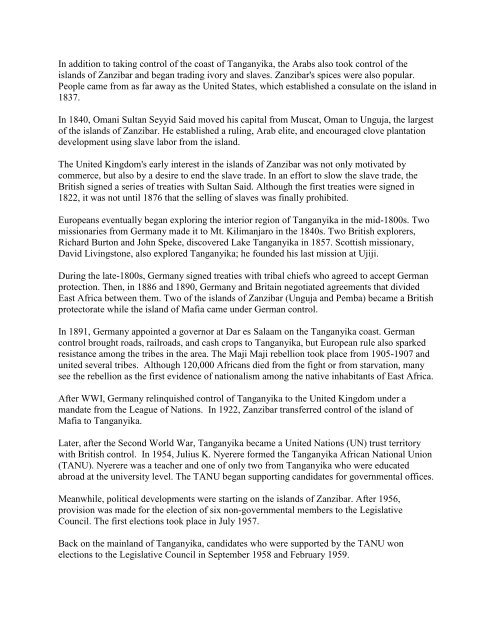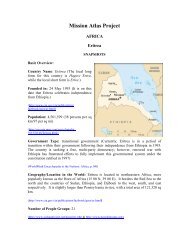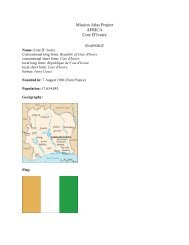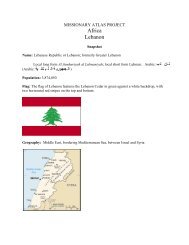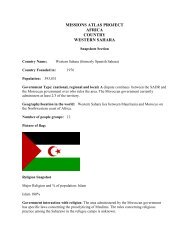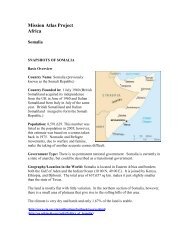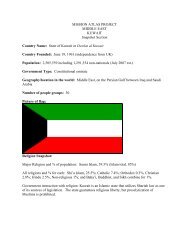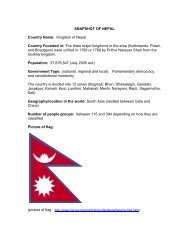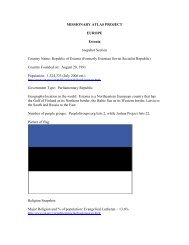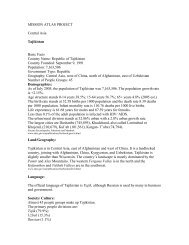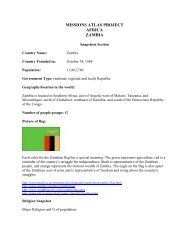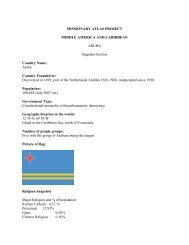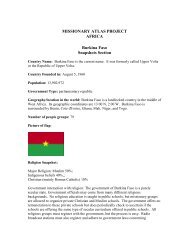Tanzania Profile.pdf - WorldMap
Tanzania Profile.pdf - WorldMap
Tanzania Profile.pdf - WorldMap
You also want an ePaper? Increase the reach of your titles
YUMPU automatically turns print PDFs into web optimized ePapers that Google loves.
In addition to taking control of the coast of Tanganyika, the Arabs also took control of theislands of Zanzibar and began trading ivory and slaves. Zanzibar's spices were also popular.People came from as far away as the United States, which established a consulate on the island in1837.In 1840, Omani Sultan Seyyid Said moved his capital from Muscat, Oman to Unguja, the largestof the islands of Zanzibar. He established a ruling, Arab elite, and encouraged clove plantationdevelopment using slave labor from the island.The United Kingdom's early interest in the islands of Zanzibar was not only motivated bycommerce, but also by a desire to end the slave trade. In an effort to slow the slave trade, theBritish signed a series of treaties with Sultan Said. Although the first treaties were signed in1822, it was not until 1876 that the selling of slaves was finally prohibited.Europeans eventually began exploring the interior region of Tanganyika in the mid-1800s. Twomissionaries from Germany made it to Mt. Kilimanjaro in the 1840s. Two British explorers,Richard Burton and John Speke, discovered Lake Tanganyika in 1857. Scottish missionary,David Livingstone, also explored Tanganyika; he founded his last mission at Ujiji.During the late-1800s, Germany signed treaties with tribal chiefs who agreed to accept Germanprotection. Then, in 1886 and 1890, Germany and Britain negotiated agreements that dividedEast Africa between them. Two of the islands of Zanzibar (Unguja and Pemba) became a Britishprotectorate while the island of Mafia came under German control.In 1891, Germany appointed a governor at Dar es Salaam on the Tanganyika coast. Germancontrol brought roads, railroads, and cash crops to Tanganyika, but European rule also sparkedresistance among the tribes in the area. The Maji Maji rebellion took place from 1905-1907 andunited several tribes. Although 120,000 Africans died from the fight or from starvation, manysee the rebellion as the first evidence of nationalism among the native inhabitants of East Africa.After WWI, Germany relinquished control of Tanganyika to the United Kingdom under amandate from the League of Nations. In 1922, Zanzibar transferred control of the island ofMafia to Tanganyika.Later, after the Second World War, Tanganyika became a United Nations (UN) trust territorywith British control. In 1954, Julius K. Nyerere formed the Tanganyika African National Union(TANU). Nyerere was a teacher and one of only two from Tanganyika who were educatedabroad at the university level. The TANU began supporting candidates for governmental offices.Meanwhile, political developments were starting on the islands of Zanzibar. After 1956,provision was made for the election of six non-governmental members to the LegislativeCouncil. The first elections took place in July 1957.Back on the mainland of Tanganyika, candidates who were supported by the TANU wonelections to the Legislative Council in September 1958 and February 1959.


